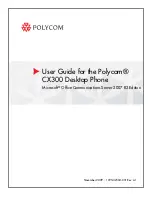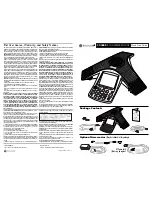
D9412G/D7412G Operation & Installation Guide
© 2002 Radionics
Page 43
43488D
D9412G/D7412G
Off-board Points
Wiring POPITs together: Do NOT connect POPITs to each other in series, or with a T-tap. Doing so may cause
random missing POPIT conditions. Follow the procedure below to connect POPITs to one another in parallel.
1.
Connect the positive (+) Data terminal from one POPIT to the positive (+) Data terminal on the next POPIT.
2.
Connect the negative (-) Data terminal from one POPIT to the negative (-) Data terminal on the next POPIT.
3.
Repeat steps 1 and 2 to connect all POPITs to the expansion loop. The POPITs don’t need to be wired in any
particular order on the loop. The switch setting on each POPIT assigns it a point number, regardless of its
physical location.
Three inch clearance for tampered POPITs: Mount tampered POPIT Modules at least three inches apart to
prevent the tamper magnets from interfering with each other.
8.3.4
Wiring Data Expansion Loops to POPEX Modules
There are two positive (+) and two negative (-) data expansion loop terminals on each POPEX Module. Follow the
procedure below to connect the data expansion loops to the D8125 POPEX Module (see
Figure 14a and Figure
14b). Remember, a maximum of 119 POPITs can be connected to one D8125 on the D9412G and 67 for the
D7412G.
1.
Connect the positive (+) Data terminal from the first POPIT on the data expansion loop to one of the D8125
Module’s positive (+) terminals.
2.
Connect the negative (-) Data terminal from the first POPIT on the data expansion loop to one of the D8125
Module’s negative (-) terminals.
8.3.5
POPIT Sensor Loops
The number of normally-open and/or normally-closed detection devices each sensor loop can supervise is limited
only by the resistance on the loop. Resistance on each sensor loop must be less than 100
Ω
not including the
EOL resistor.
Certain UL and NFPA applications may limit the number of detection devices. Consult the appropriate UL or NFPA
standards.
POPITs detect open, shorted, normal, and grounded circuit conditions on their sensor loops. They transmit the
condition of their loops to the panel. A ground on the sensor loop reports as a general system ground fault
condition (see
Ground Fault in the D9412G/D7412G Installation and Troubleshooting Quick Reference Guide).
Each POPIT is programmed and transmits to the panel separately.
Terminate each POPIT sensor loop with the 33 k
Ω
end-of-line resistor [D106F) included with each POPIT.
Radionics recommends the use of twisted-pair wire (six twists per foot) in all POPEX/POPIT installations for both
the data expansion loop wiring and the POPIT sensor loops. Run wires away from AC sources to prevent AC
induction. If a noisy environment is suspected, use shielded cable. See section
8.3 Installing the D8125 POPEX
Module.
8.3.6
POPIT Module Point Assignments
Six switches on each POPIT assign the module to a point number. POPIT switch settings are found in
Point
Assignment in the D9412G/D7412G Program Record Sheet. See Figure 15.
For the D9412G, Points 73 to 127 and 193 to 247 must use the D9127 POPITs. Points 9 to 72 and 129 to
192 may use either D8127 or D9127 POPITs. For the D7412G, Points 9 to 72 may use either D8127 or
D9127 POPITs; however, D9127 POPITs must be used for Points 73-75.
8.3.7
Program Record Sheet
The first column on the
D9412G/D7412G Program Record Sheet contains the switch settings for the D8127
POPITs. Switches are numbered 1 to 6, left to right on the D8127 POPIT. Switches are numbered 0 to 6, left to right
on the D9127 POPIT. Set switches whose number appears in the setting to the ON position. Set switches with a
dash (-) in the switch position to the OFF position. See
Figure 15.
The second column contains the translation of the point number into the ZONEX format. See
Point User Flag in the
D9412G/D7412G Program Entry Guide for an explanation of this feature.
The third column contains the point number as it is displayed at command centers.
The fourth column contains the point index. See
Point Index Parameters in the D9412G/D7412G Program Entry
Guide for an explanation of the point index.
The fifth column of the Program Record Sheet shows the area the point is assigned to.
















































